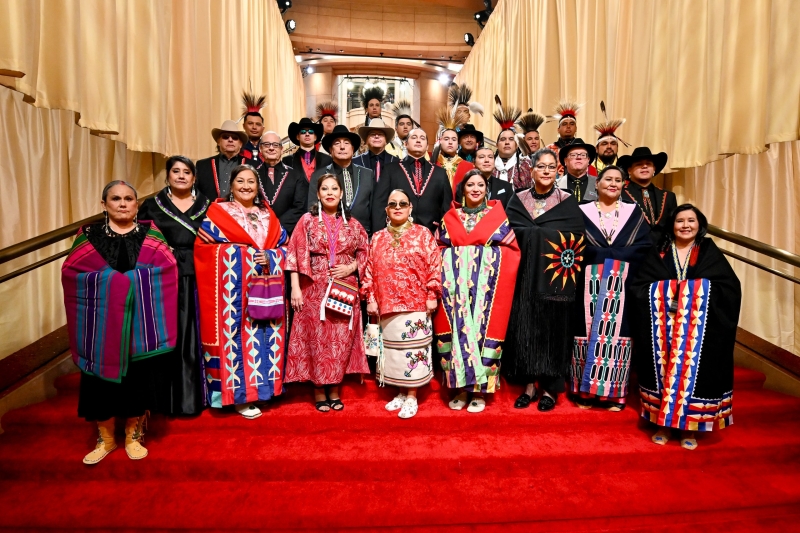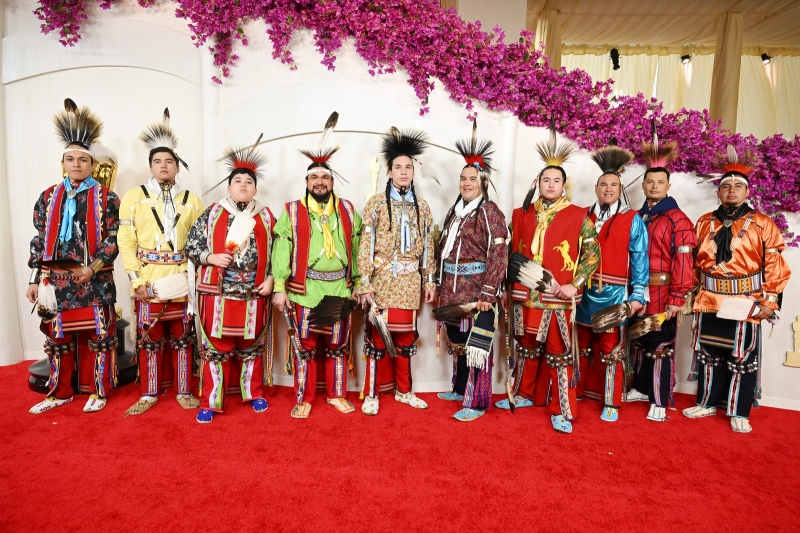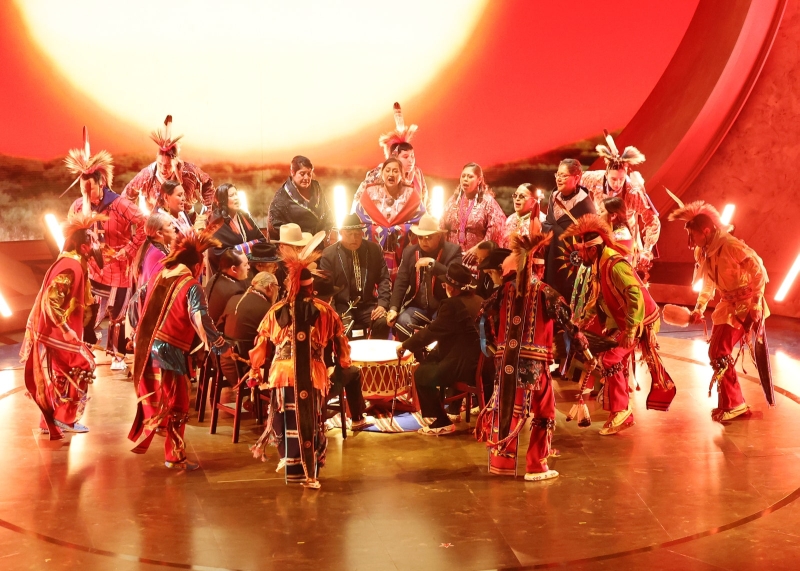
Despite Martin Scorsese’s Killers of the Flower Moon taking home no awards at last night’s Oscars (can you say snub?), the poignant film still enjoyed plenty of moments during the awards ceremony. Its leading star, Lily Gladstone, was nominated for best actress and delivered one of the best red carpet looks of the night, sporting a custom Gucci gown made in collaboration with Joe Big Mountain, an Indigenous artist renowned for his quillwork. During the ceremony, composer Scott George and other members of the Osage Nation—a call back to the film, which revolves around the Osage people and how they were historically exploited for oil money—also performed a special healing song titled, “Wahzhazhe (A Song For My People).” It was their colorful looks, embedded with special meaning, that served as my personal Oscars highlight.
Rightfully so, it’s clear that the Oscars made intentional space for members of the Osage Nation to attend last night, both on the red carpet and the main stage; With Killers of the Flower Moon amplifying the untold stories of violence and injustices that the Osage have endured, having the community represented during the ceremony was both necessary and, frankly, long overdue. On the red carpet, the dancers and singers made the most of the moment: They brought forward their best traditional regalia for the affair, choosing to wear pieces such as beaded moccasins and sashes, ribbon shirts, porcupine roach headpieces, and traditional Osage-style blankets—all of which are typically worn during powwow ceremonies or special community events, not so much a Hollywood step and repeat.

The sprightly colors and intricate craftwork found within the Osage members’s looks certainly brought a new type of energy to the red carpet—but it was more so the context behind them that made the outfits so special. Historically, the Oscars have not been a place where Indigenous actors or performers have always been welcomed (lest we not forget the year Marlon Brando refused his 1973 Oscar in light of Hollywood’s consistent mistreatment of Native Americans); Seeing the Osage stand tall and proud in their cultural wear, then, served as a reclamation of sorts. By donning their longstanding designs, the Osage used fashion to make up for the loss time. And in an arena like a mainstream red carpet, where Indigenous design rarely gets spotlighted, this approach was especially impactful.
Of course, there was no better exemplification of this powerful fashion choice than during their performance of “Wahzhazhe (A Song For My People).” Hitting the Oscars main stage with a traditional drum circle at the center, the Osage dancers and singers showed stylish strength in numbers—uniting for a spirited song that was full of soul. And, sure, the celebrities in high-fashion gowns watching in the audience were fun to spectate, too—but for me, the Osage Nation’s dedication to upholding heritage was the best fashion moment of the night.


